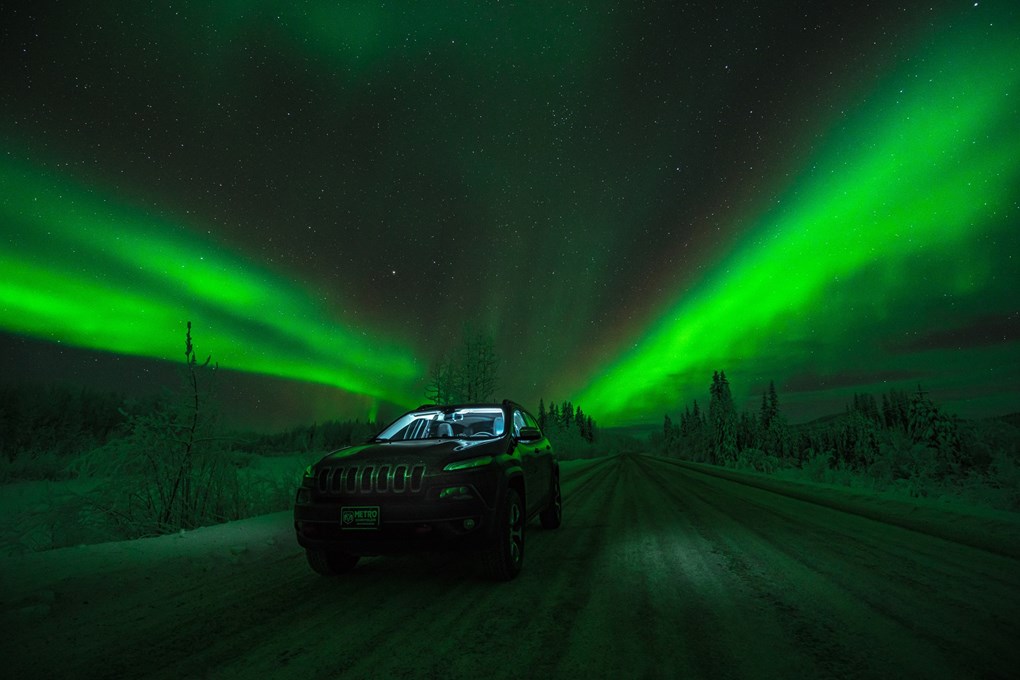
Table of Contents
- What are the Northern Lights?
- When Can You See the Northern Lights in Iceland?
- What is the Best Time To See the Northern Lights in Iceland?
- Is Iceland a Good Place to See the Northern Lights?
- What is the Best Way to See the Northern Lights in Iceland?
- What’s the Best Car to Rent in Iceland to See the Aurora Borealis?
- Where can you see the Northern Lights in Iceland?
- Where are the Best Places in Iceland to See the Northern Lights?
- Best places to see the Northern Lights near Reykjavik
- Preparing to See the Northern Lights in Iceland
- A Few Safety Reminders for Those Chasing Iceland’s Northern Lights on Their Own
- How to Photograph the Northern Lights in Iceland
- The Northern Lights are Waiting!
There’s nothing like the northern lights. When the night sky bursts into a blaze of colour, dancing across the horizon, it’s a simply magical experience. Maybe that’s why so many travellers consider seeing the aurora borealis for themselves to be an experience worth adding to their bucket lists. Many of those travellers come to Iceland to see the northern lights. But, if you’re hoping to glimpse Iceland’s northern lights during your visit, don’t make the mistake of thinking that you can visit Iceland any time and see the auroras.
While Iceland, with its location inside the Northern Lights Belt, is ideally situated for aurora viewing, there are best times to see the northern lights in Iceland and the best places in Iceland to see the northern lights.

If you’re planning an aurora-hunting trip to Iceland, we’re here to help. Here’s everything you need to know about when to see the northern lights in Iceland, where to see the northern lights in Iceland and how to best go about seeing them on your own during a self-driving or road trip. In this article, we’ll answer…
- What’s the best time to see the northern lights in Iceland?
- Are the northern lights more visible under certain conditions?
- How do you read Iceland’s aurora borealis forecast?
- What’s the best car to rent in Iceland to see the aurora borealis?
- Where are the best places throughout Iceland to see the northern lights?
- What are the must-know safety rules for your Iceland self-drive aurora chasing trip?
So, without further ado…
What are the Northern Lights?
The northern lights go by many other names, including the Aurora Borealis and the Aurora Polaris. Whatever you call them, though, the northern lights are a spectacular, colourful, night sky display that’s only visible in certain areas of the world. The colours are created by charged particles colliding with gasses in the atmosphere, creating flashes of light. Earth’s magnetic field and solar winds both play a role in the northern lights’ appearance, from night to night.
Because geography and weather are key to this natural phenomenon, many travellers flock from around the globe to spots where the northern lights are visible. Luckily for you, if you have a trip to Iceland planned, the country is one of the best spots in the world to see the northern lights.
Quick facts about the Northern Lights
Before you set off on your northern lights-hunting adventure, arm yourself with some fun facts. You’ll impress your fellow travellers as you regale them with your knowledge of all things aurora borealis.
- The term “aurora borealis” is derived from the Greek words for sunrise and wind.
- The northern lights feature prominently in mythologies where the lights have been visible for millennia; depending on what ancient civilization you’re talking to, they might tell you that the lights were an omen of bad things to come, or some might say that the lights were caused by dragons battling in the atmosphere.
- The northern lights can occur as low as 90 kilometres (55 miles) above ground level, to as high as 130 kilometres (80 miles) above ground level.
- While the northern lights are technically only visible at night, they can occur at any time at all.
- The northern lights’ different colours are caused by different types of gas particles.
- Most northern lights are yellow, green or pink. However, you might occasionally see rare blue or red hues.
- While Iceland and Scandinavia are the most popular regions for viewing the northern lights, you can also see the northern lights all around the world, in places such as the northernmost reaches of North America and parts of northern Europe, such as Scotland and Russia.
- The first northern lights photo was taken in 1892, by a German astronomer.
- Today, you can take your own northern lights photos, as modern cameras are even more adept at picking up on the northern lights’ colours than the human eye.
- It's an actual job to study the northern lights, and recent studies have resulted in convenient tools to help with northern lights chasing (and you'll find out more about these tools below!).
When Can You See the Northern Lights in Iceland?
The northern lights sometimes called the aurora borealis or just aurora, are caused by solar wind disturbances high in the sky. Auroras are most likely to be spotted toward the earth’s poles, but only during certain months. If you’re coming to Iceland to see the northern lights, you’ll want to visit during Iceland’s northern lights season.
Iceland’s northern lights season runs throughout the fall to spring, from late August to mid-April. Out of those months, the best times to visit for aurora borealis viewing are late September to March. If you visit Iceland during the summer months, your chances of seeing the aurora borealis are slim to non-existent, as the sun stays up in Iceland for nearly 24 hours a day during peak summer months.
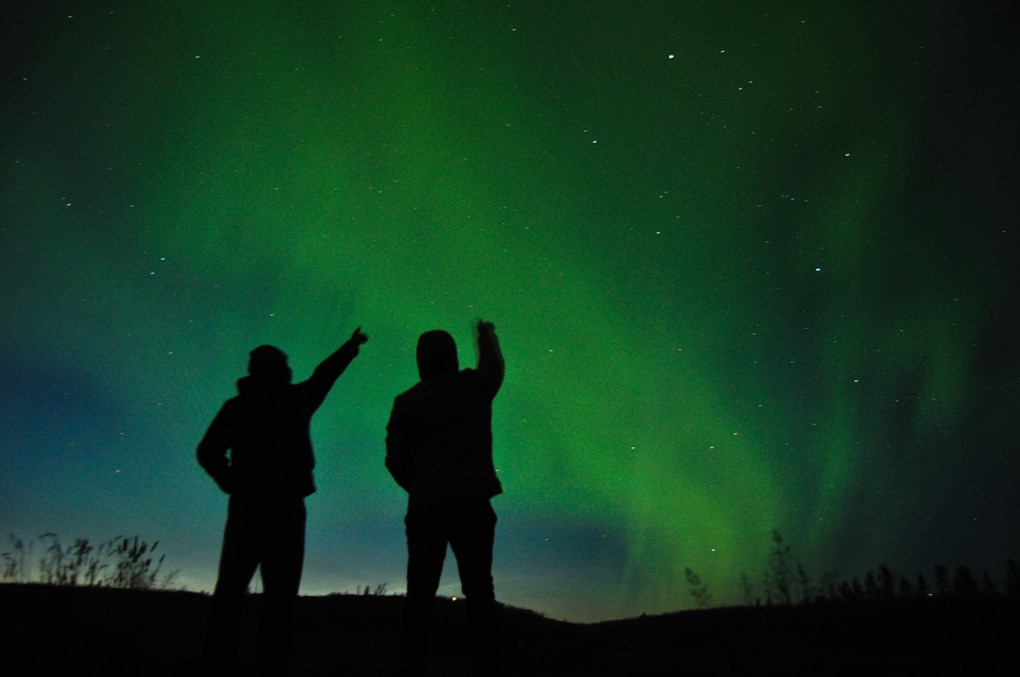
What is the Best Time To See the Northern Lights in Iceland?
If you're lucky, you may be able to see the auroras as early as late August, but still, chances are slim, and the August sky is often not dark enough to show the northern lights in their full glory. If you want to have more chances of seeing the northern lights in Iceland, you will want to come from September to March.
Beyond the best times of year to see the northern lights in Iceland, there are also specific times of day best for aurora viewing in Iceland. In the winter months, Iceland can experience fewer than five hours of daylight per day. Viewing the aurora borealis is impossible during the daylight hours; you need a dark night sky to view the lights. Typically, any dark hour is suitable for aurora borealis viewing, but viewers report the most aurora borealis sightings between the hours of 9:30 PM and 1 AM.
Are the northern lights more visible under certain conditions?
Yes! Even if you visit the country during Iceland’s northern lights season, and even if you go searching for the aurora borealis during the best times to see the northern lights in Iceland, there are still other factors that play into your chances of spotting a truly spectacular lights display. These factors include…
- The phase of the moon
- The local weather
- Proximity to the city
- The current aurora borealis forecast
First, the moon phase will play a significant role in whether or not you can see the northern lights. Just like the sunlight will inhibit your view, so will the moonlight. If you have a combination of weak northern lights and robust and bright moonlight, the likelihood of actually viewing the lights decreases significantly.
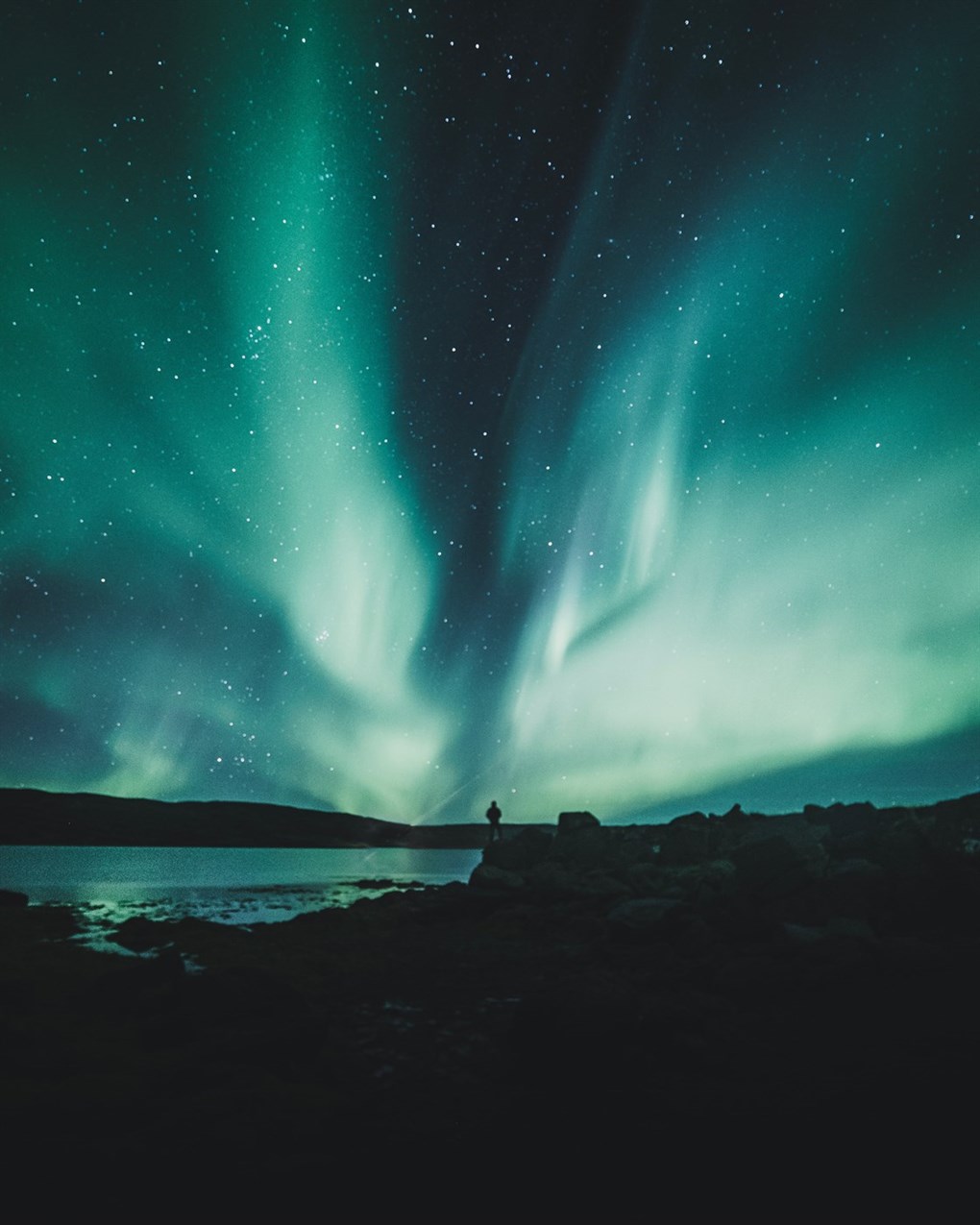
But it's not just sunlight and moonlight that can interfere with your ability to see the aurora. Artificial light can impact visibility as well. This is why you want to stay away from artificial light when looking for the northern lights in Iceland. You’ll want to head out of your city or village. Once you've actually found your northern lights, please avoid using any artificial light, such as the lights from your car’s headlamps or light from a cell phone, so you can best enjoy the auroras in their full splendour.
Additionally, if there’s too much cloud cover, that may also prevent you from seeing Iceland’s northern lights. It’s just an unfortunate coincidence that your chances of cloud cover — and the subsequent bad weather that comes with it, including snow, rain and storms — in Iceland are much more likely during Iceland’s northern lights season. Sometimes, you may be able to spot the aurora borealis even with a little cloud cover if the aurora is particularly active and bright, but there are no promises.
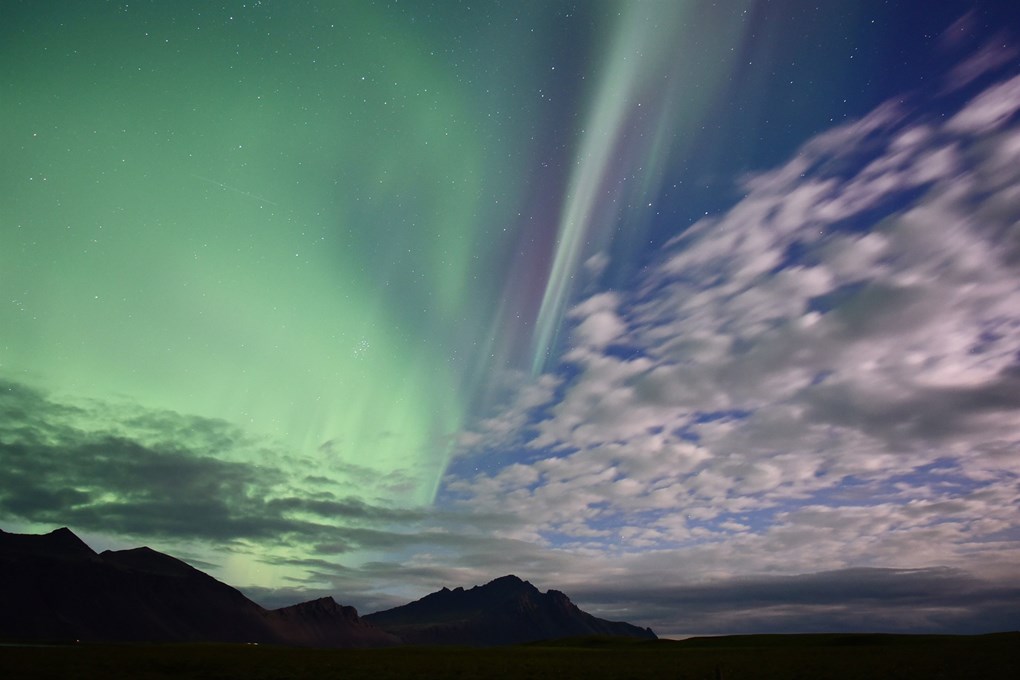
How do you read Iceland’s Aurora Borealis Forecast?
One extremely handy tool to use when visiting Iceland and looking for the northern lights? Iceland’s very own aurora borealis forecast, provided by the Iceland Met Office. You can check this forecast for up-to-date predictions regarding Iceland’s northern lights, with predictions covering the current day and the subsequent two days.
When you look at the forecast, you’ll notice that it uses a scale from 0 to 9 to indicate the northern lights’ activity. If the scale is set at a 0, it means that there’s essentially zero (or, at least, very little) chance of seeing the northern lights. If the scale is set at 9, you are pretty much guaranteed to see the northern lights.
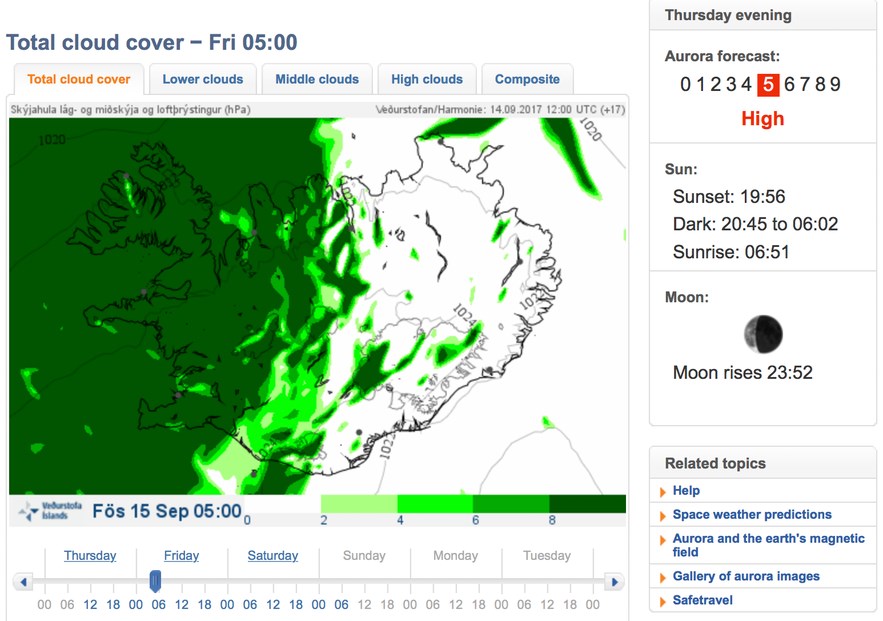
Both 0 and 9 are very rare settings for this scale, so you likely won’t see either ranking. Instead, most commonly, the scale is set at 1, 2 or 3. But don’t think the smaller number means you won't have a good chance of seeing the lights! A 3 is an outstanding number, giving you a moderately good chance of seeing some action. Most aurora hunting tours in Iceland will operate when the aurora level is set to a 3. Anything higher than a 3 indicates, obviously, an even better chance of seeing the aurora borealis.
Otherwise, when reading the Iceland aurora borealis forecast, you can view the forecast by day and time, including future days and times, and see the corresponding predicted activity level. All in all, the tool is straightforward to use. In addition to showing you the aurora borealis forecast, it will also show you the sunset and sunrise times, so you know the best, darkest times for viewing. The forecast tool likewise shows you the moonrise times, so you can take moonlight into account when aurora hunting as well.
You’ll additionally see a range of colours on the forecast map, including green, light green, dark green and white. The green indicates cloud cover, and the darker the green hue, the thicker the clouds. So, when looking at the map, you’ll have a greater chance of seeing the northern lights if you go to a “white” area, as there will be little or no cloud cover in those areas. If you’re in a dark green portion of the map, you’ll be less likely to see the lights.
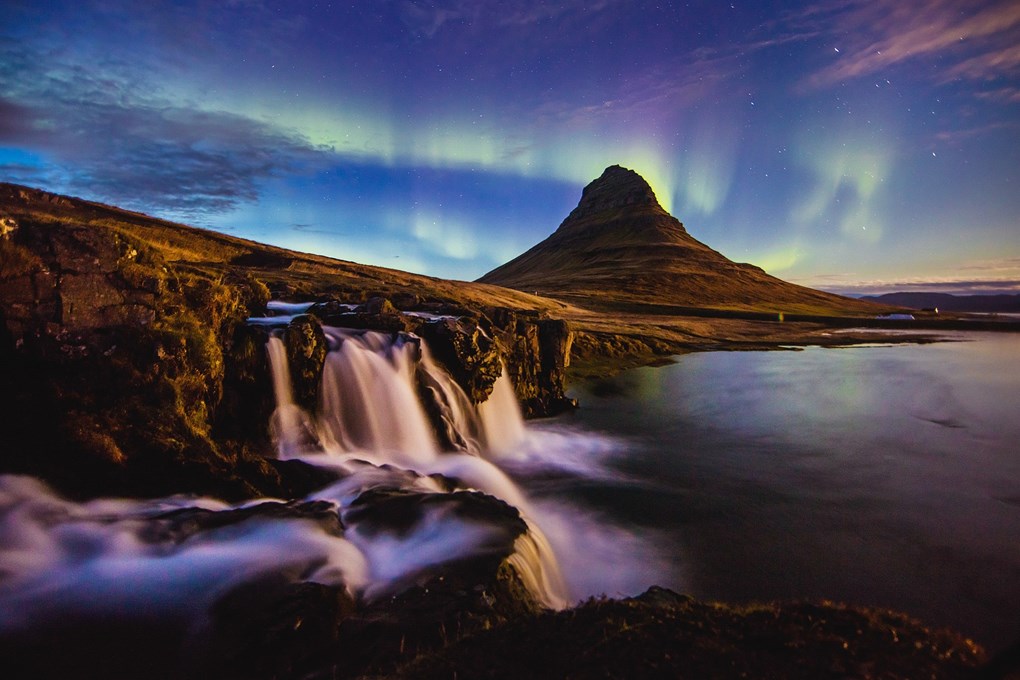
But, beyond all this, really, northern lights hunting in Iceland all comes down to luck. Even if all of the conditions for aurora borealis viewing are perfect, you still might not see the lights at all. Or, the conditions for aurora borealis viewing might not be that ideal, and you could get lucky and see the lights when you least expect them.
So, considering that, don’t plan on spending only one night searching for the northern lights. Set aside a few nights during your trip and keep your itinerary flexible, especially if seeing the northern lights is on your bucket list. You don’t want to let a little bit of bad luck keep you from what could be a once-in-a-lifetime experience!
Is Iceland a Good Place to See the Northern Lights?
Yes! Iceland is a near-perfect spot to watch the northern lights. As mentioned above, some of the most prominent northern lights activity takes place in Iceland and nearby Scandinavian countries.
The northern lights are typically only visible above 60 degrees latitude north or below 60 degrees latitude south (though, technically, any “northern lights” that you see below 60 degrees latitude south would be called southern lights, or aurora australis). The area between 60 degrees latitude north and 72 degrees latitude north is called the Northern Lights Belt, and Iceland sits right in the middle of this belt.
However, that’s not the only reason that Iceland is a great spot for northern lights watching. Beyond geography, Iceland’s infrastructure also plays a role in your northern lights-viewing experience. Compared to other destinations around the globe, Iceland has far less light pollution, meaning the northern lights’ colours are far more vibrant than what you’ll see elsewhere. And, better yet, for those who don’t quite care for the cold weather that nearly always comes with northern lights watching, Iceland is warmer than some of our Nordic counterparts, so you can stay cosier while you enjoy the lights.
What are the Northern Lights in Iceland like?
Don’t get us wrong — the northern lights in Iceland are beautiful. However, it’s important to understand that, when you go to Iceland, you won’t necessarily see the big bursts of vibrant colours that you might spot in your favourite travel photos or on Instagram. Those views are typically not that common and you’re very lucky if you catch them.
So, instead, anticipate more of a hazy green cloud than big, undulating streams of multiple colours. This is more common and just as breathtaking and beautiful — just maybe not what you’re expecting.
Are Northern Lights guaranteed in Iceland?
No, seeing the northern lights is not guaranteed when visiting Iceland, even if you visit at exactly the right time and plan everything perfectly. Just like when visiting any destination around the world and going out looking for a natural phenomenon or native animal, even, humans can’t necessarily always predict when you’ll see whatever it is you’ve come to find. It’s entirely possible that you’ll come to Iceland and not see the northern lights at all.
However, there are some things you can do to increase your chances of seeing the lights. For example, you can plan your visit for the winter months, when the lights are more likely to appear. (Yes, even though visiting Iceland in the winter months means putting up with some colder weather and harsher weather conditions overall, if you’re coming to Iceland specifically to see the northern lights, this is when you need to do it.)
What is the Best Way to See the Northern Lights in Iceland?
So, if seeing the northern lights in Iceland is not guaranteed, how can you increase your chances of seeing them, beyond just visiting Iceland during the winter months?
One of our top recommendations is to see the northern lights from the comfort of your own rental vehicle. Renting a car in Iceland will allow you the freedom and mobility to chase the northern lights when they're most visible, so you're not reliant on a one-night tour or a tour guide’s schedule. You can go out and look for the lights at any time, and even use some of Iceland’s northern lights prediction tools to go where the lights will be most vibrant. Renting a car for your Iceland northern lights-chasing trip also allows you to stay in the city or a town, such as Reykjavik, but then get away from the town at nightfall, away from the light pollution, to chase the lights and then return to the comfort of your hotel afterwards.
Just remember that if you do book a rental car in Iceland to follow the northern lights, you’ll want to go with a 4x4 vehicle, which will keep you safe in Iceland’s harsh winter weather conditions. You can read all about why you need a 4x4 car when visiting the country, especially in winter, in our full guide to 4x4 car rentals in Iceland.
What’s the Best Car to Rent in Iceland to See the Aurora Borealis?
If you plan to rent a vehicle for your trip to Iceland and plan on using that rental car to look for the northern lights, you will need a 4x4 vehicle. Iceland’s rough winter weather conditions, paired with the darker, less-developed roads of rural Iceland, mean potentially hazardous situations for any 2WD vehicle.
You can learn more about renting a 4x4 vehicle in Iceland via our full guide. For additional tips on overall driving in Iceland, check out our latest Iceland Driving Guide.
Don’t wait to book your 4x4 vehicle for your winter Iceland trip, though. These in-demand vehicles can get booked up pretty quickly, so you’ll want to book yours as soon as possible via Lava Car Rental. We offer a full range of 4x4 vehicles, with automatic and manual transmissions, in a range of sizes to fit a range of traveller needs. Whether you want more of a luxury vehicle or something that can fit the entire family with ease, we’ll outfit you with the best, safest and most comfortable rental car for your Iceland excursion.
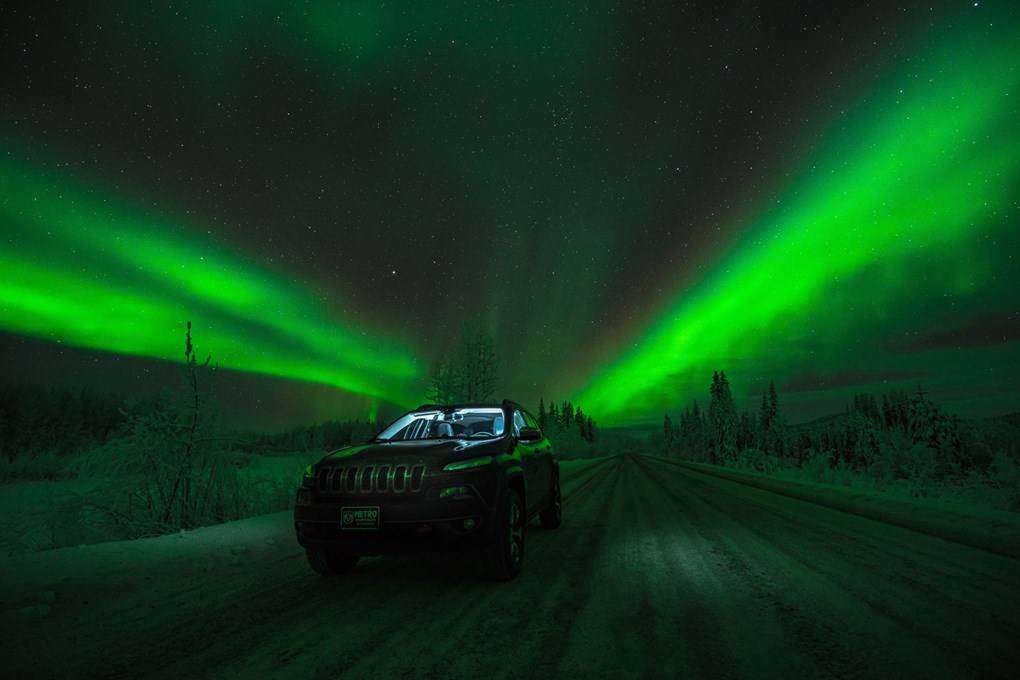
Where can you see the Northern Lights in Iceland?
So let’s say that you have your car rental in Iceland sorted. Now what?
Well, then you’ll want to go about actually finding the northern lights. Luckily for you, you can see the northern lights just about everywhere in Iceland. However, some places are better for seeing the northern lights than others. For the best viewing experience, you’ll want to go somewhere outside of the city, where you’re further away from light pollution.
Where are the Best Places in Iceland to See the Northern Lights?
Based on all of the above, there are some general best places in Iceland to see the northern lights. You’ll want to go somewhere that’s…
- Away from the city or town (in other words, get out of Reykjavik!)
- Marked “white” on the aurora forecast map
- And somewhere marked as “high activity” on the aurora forecast map’s 0 to 9 rating scale
With that in consideration, there are a few top spots to go to throughout Iceland if you want to see some fantastic northern lights (when the conditions are right, based on the above tips) and also some amazing natural scenery at the same time. These spots are great to visit during the daytime, but they show off just how gorgeous Iceland really is at night, with the aurora borealis above them.
- Vik
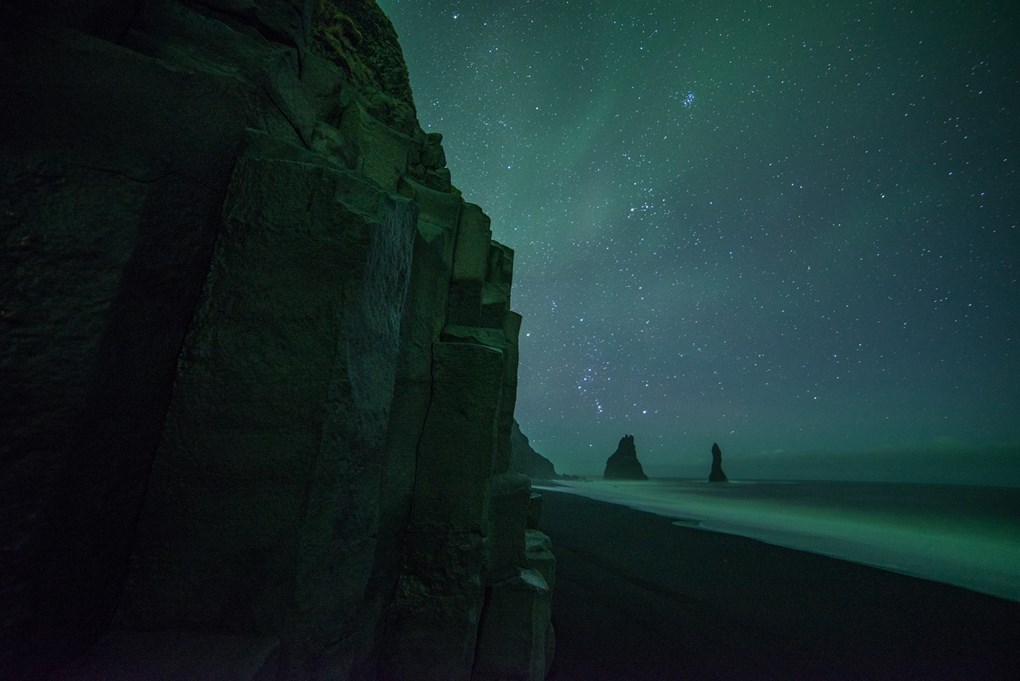
On Iceland’s South Coast, Vik is a remote, small village right on the ocean, with meaningless artificial illumination to block your view of the northern lights. Here, you’ll enjoy the amenities of being in a village, so you can see the lights without heading off into the middle of nowhere in the middle of the night.
Vik is a convenient spot to stop for a while and look for the northern lights, especially if you’re on a South Iceland road trip. Vik offers some spectacular, dramatic scenery that perfectly compliments the northern lights, such as the Reynisfjara black sand beaches, the basalt columns of Reynisdrangar and the rock arch of Dyrhólaey.
- Jokulsarlon Glacier Lagoon
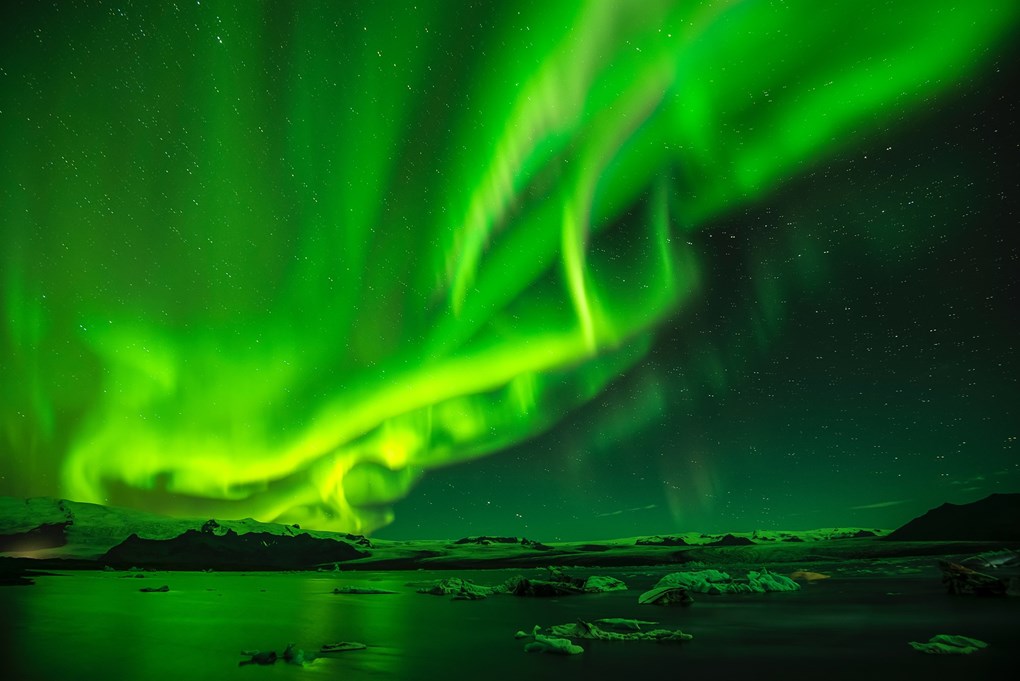
The Jokulsarlon Glacier Lagoon is an excellent spot to watch the northern lights as well. The lagoon is far away from light pollution and it offers gorgeous scenery that comes alive in a wash of bright colours when the northern lights pop up. Just about any traveller could agree that there’s just something magical about watching the green lights reflected on the lagoon's calm surface.
This glacier lagoon is filled with icebergs and, when you have the northern lights right above them, the entire lake lights up in a colourful, beautiful display. Located in the southeast of Iceland, the glacier lagoon is very easy to reach and a lovely spot for aurora borealis sight-seeing when the conditions are right. One other cool reason to visit? During Iceland's northern lights season, the lagoon also hosts hundreds of seals.
- Kirkjufell and the Snaefellsnes Peninsula
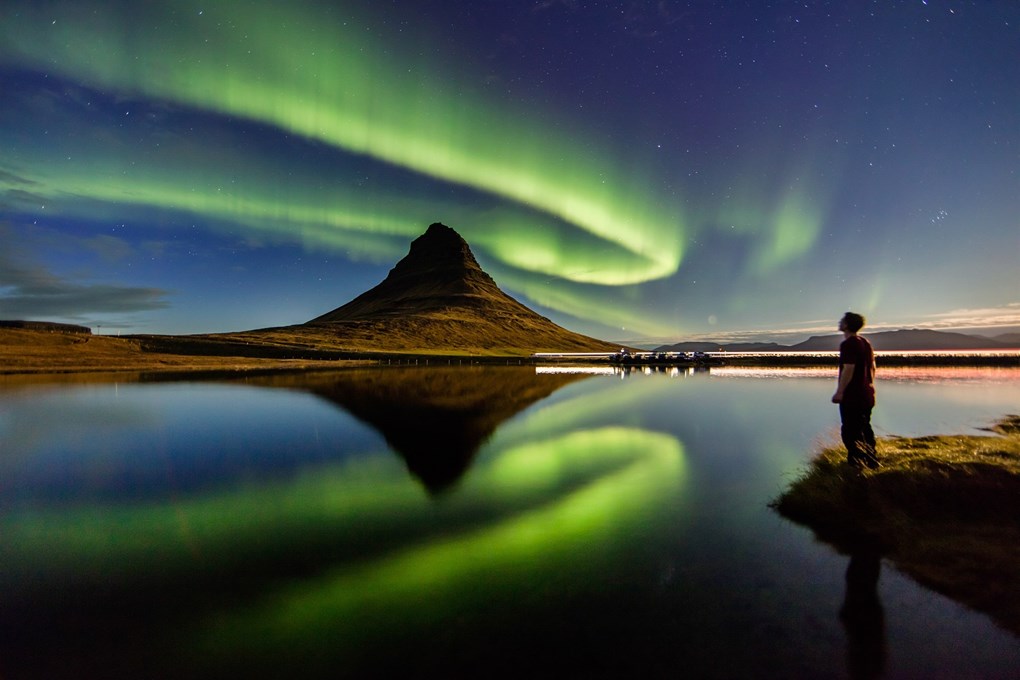
Some of the most popular Iceland northern lights photos that you’ll see were taken on the Snaefellsnes Peninsula, with one prominent landmark in the foreground: Kirkjufell. This mountain, which translates to “church mountain,” is already the most photographed mountain in Iceland, due to its unique shape and surrounding landscape. The northern lights playing in the sky around it only make for a more jaw-dropping photo.
If you are travelling to the northern part of Iceland, the Myvatn area, the countryside of Akureyri, or small towns around the Ring Road will also be good spots for aurora hunting.
- Thingvellir National Park
If you're looking for a particularly convenient place to see the northern lights, and you maybe don't want to drive that far from Reykjavik, you can take the Golden Circle and stop by Thingvellir National Park for some northern lights sightseeing.
- Ásbyrgi Canyon
Asbyrgi Canyon is frequently named one of the best spots to see the northern lights. The hiking hot spot is situated in northern Iceland, making it a top pick if you're already in the area.
- Reykjavik
Of course, if you’re stuck in Reykjavik, you’re not completely out of luck when it comes to your northern lights watching. Reykjavik is considered the best city for northern lights watching in the entire country.
Best places to see the Northern Lights near Reykjavik
If you're in Reykjavik, there are several spots where you can go to see the northern lights without travelling too far from the city centre. Most of these spots face the coast or another body of water so that you can see the lights without the city’s light pollution interfering.
Grotta Lighthouse and Harpa Conference Hall both face the coast, so they’re good spots to go to for viewing in the area. Likewise, Reynisvatn is a Reykjavik lake where light pollution is minimal. For a hilltop view of the lights, go to Perlan, a glass dome surrounded by a forest.
You can also go to Reykjavik’s city parks for views away from the downtown lights, such as Hljómskálagarður, Klambratún, Laugardalur and Elliðaárdalur.
Preparing to See the Northern Lights in Iceland
Beyond knowing where to go for the best northern lights viewing in Iceland, what else can you do to give yourself the best shot at seeing this natural phenomenon? Here are a few tips.
- Book your trip at the right time.
First of all, you need to book your trip to Iceland at the right time. As mentioned above, you can’t see the northern lights every day of the year and wintertime is the best time of year to see the lights. Don't make the mistake of thinking that you can just come to Iceland in the summer and stay up all night to see the lights in peak darkness. Because of Iceland’s geography, the island never gets truly all that dark in the summer months; instead, peak darkness only really occurs in the winter, from August to April. The very best times to see the northern lights within that time period, though, are around the equinoxes, in September and March. Furthermore, around those times, the northern lights are most visible at certain times of night, typically before 1 A.M.
- Keep an eye out for clear skies.
But even if you book a trip to Iceland for September or March, you don’t want to be sitting around outside every night until 1 A.M., hoping that you’ll see the lights at some point during your trip. Instead, you can gauge pretty well whether or not the northern lights will be visible on any given day by just taking a look at the weather forecast.
Due to the northern lights’ position high up in the atmosphere, if there’s any cloud cover, the clouds will block out the lights. And anyone who knows Iceland's weather knows that we have our fair share of clouds and storms, especially during the winter months.
So, for your best chance at seeing the northern lights, you may want to not only book your trip during the right time of year but also book an extended trip, so that you have more nights, meaning more chances to see the lights. You may also want to keep your travel itinerary fairly flexible, so you can go northern light hunting at a moment’s notice.
- Stay comfy.
The last thing you want to happen when you’re out looking around for the northern lights is to find yourself so cold that you're driven back indoors again. For this reason, make sure to pack lots of layers and warm, thermal clothing for your trip to Iceland. Think of a down jacket, hat, insulated gloves and hand warmers, and winter-ready hiking boots.
Also bring along all the tools you’ll need to stay both comfortable and safe when chasing the northern lights in your rental car, such as a phone charger, hot drinks in a thermos, blankets and an emergency kit, just in case (because no one wants to find themselves stranded after an auto accident in the middle of rural Iceland in the winter!).
For more ideas on what to pack, check out our Iceland packing guide.
- Manage your expectations.
We already discussed the importance of managing your expectations in terms of what the northern lights look like, but you’ll want to manage your expectations of what the experience of chasing the northern lights will be like, too. Don't just expect this easy trip out to rural Iceland, where you’ll see the northern lights for a brief few minutes before heading off on the rest of your journey.
Chasing the northern lights takes patience and persistence. Even if you check the forecast and the weather and go to the top spots for northern lights viewing, you can end up spending hours driving around the countryside, looking for the best spot to sit for a while and watch the skies. Don’t let that discourage you from enjoying the experience — just know what you’re for. And, even if you don’t get a chance to see the lights, rest assured that there are plenty of other fun, wintertime activities in Iceland to enjoy.
Helpful apps and other tools for planning your northern lights hunt
There are a lot of helpful tools you can use to give yourself an advantage when looking for the northern lights.
The Aurora Forecast app tells you everything you need to know to find the northern lights in Iceland. Find information on predicted auroral activity, when experts predict the northern lights to be most active on any given day and more.
Iceland’s meteorological office also offers an aurora forecast, for similar information from a secondary trusted source. The office also offers a cloud cover forecast tool that can come in handy during your search; the more cloud cover there is, the less likely your chances of a sighting.
You can also join Facebook groups like the Northern Lights Alert group, which will tell you any up-to-the-minute info you need on northern lights activity in Iceland. Similarly, the Hello Aurora app gives you real-time notifications as to where other users are currently seeing the northern lights, so you can join them, wherever they are.
For planning your northern lights hunt several days in advance, you can use SolarHam, a popular tool with aurora hunters. It shows you the geomagnetic forecast for the next three days, so you can plan ahead as much as possible.
A Few Safety Reminders for Those Chasing Iceland’s Northern Lights on Their Own
While some visitors to Iceland choose to join a northern lights tour during their stay, other savvy travellers prefer to chase Iceland’s northern lights on their own. This allows them the flexibility to chase the lights for multiple nights, if desired, and the ability to go when and where the lights will be most visible. Of course, to do this, these intrepid travellers do need a rental car to get around, which is where Lava Car Rental comes in.
Lava Rental wants every visitor searching for Iceland’s northern lights to have a safe and enjoyable time, not just our customers. If you plan on driving around the island on an aurora borealis hunt during your stay, here are a few tips to keep yourself safe.
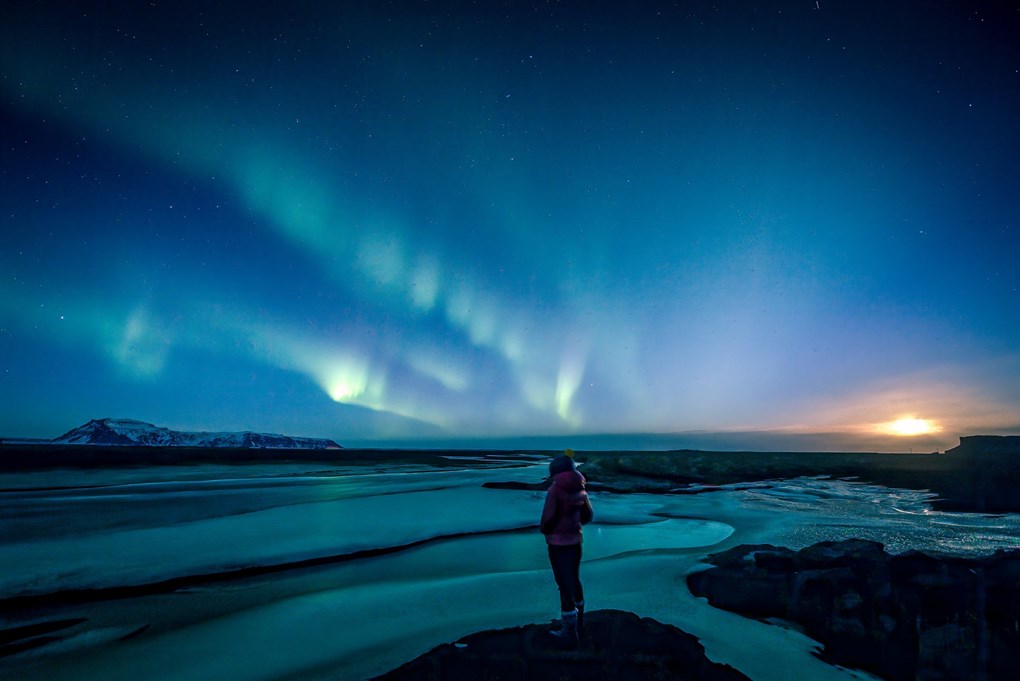
- Go slow, safe and familiar
Iceland’s more rural roadways are not lit. While this means less artificial light, which makes for better aurora borealis viewing, it also makes for potentially more dangerous driving conditions. This is especially the case during the winter season when roads can already be a little more hazardous due to snow and ice. With this in mind, take things slow to keep yourself safe and stay on familiar roadways.
We recommend our customers stay in one of the more rural areas where they plan to hunt for the northern lights. This allows them to learn the area during the day to more easily and quickly get back to their accommodations once night falls. This is especially a good idea during the winter months, as Iceland’s hazardous weather can crop up in an instant, surprising you and potentially leaving you stranded. And here are some of the best hotels in Iceland to see the Northern Lights we recommended.
- Check the weather and road conditions ahead of time
Before driving in Iceland in winter, always check the weather and road conditions regardless of day or night.
Additionally, make sure to use the helpful tools offered by safetravel.is, such as the service’s trip itinerary feature, which allows you to upload your itinerary online, giving rescuers a better idea of your location in the event of an emergency.
You can learn more about travelling around Iceland during the winter, with our winter Iceland driving guide.
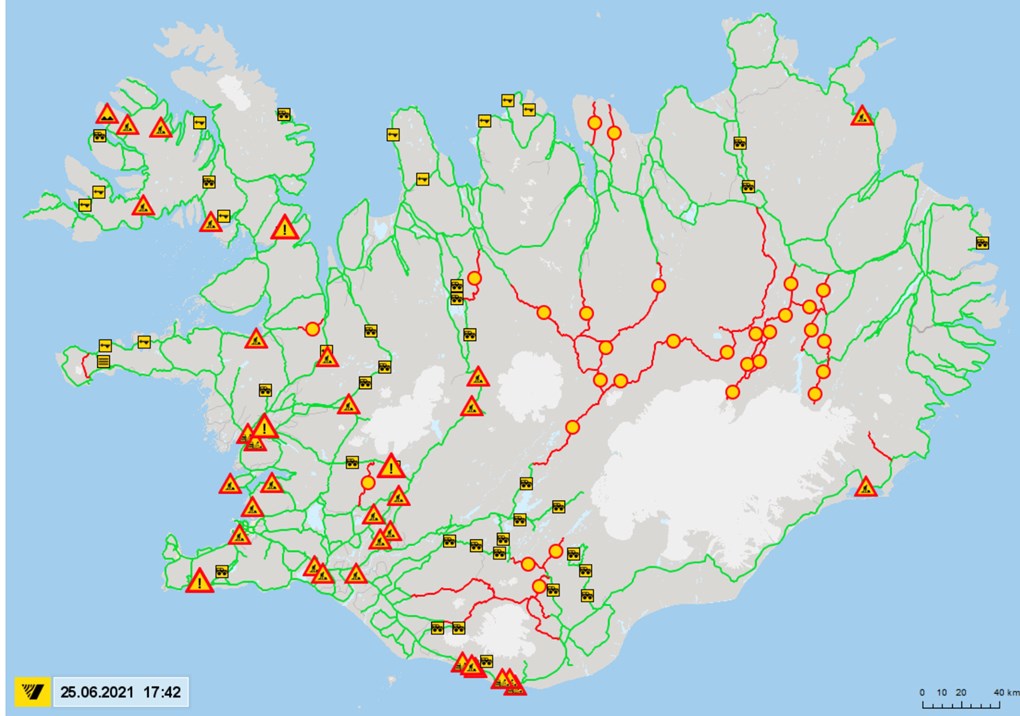
How to Photograph the Northern Lights in Iceland
Be sure to bring your camera when you go hunting for the northern lights! As mentioned, modern cameras are much more capable of picking up on the northern lights’ colours, so taking some photos during your hunting excursion can result in some gorgeous scenery not necessarily visible to the naked eye.
According to Aurora Forecast, to get the best photos, you’ll want to use your camera on its manual setting, with the flash and image stabilisation both off, and the aperture set to a lower number. Mount your camera on a tripod for the greatest stability and then start your shutter speed at 8 sec. and then adjust things as needed.
The Northern Lights are Waiting!
If you’ve always dreamed of seeing the northern lights in person, what are you waiting for? Hunting down the aurora borealis in Iceland is a once-in-a-lifetime experience that’s within your reach. With the right preparation, research, conditions and a little luck — and the right rental car — you can see this magnificent display of nature for yourself.
Search and book your Iceland rental car in Iceland




